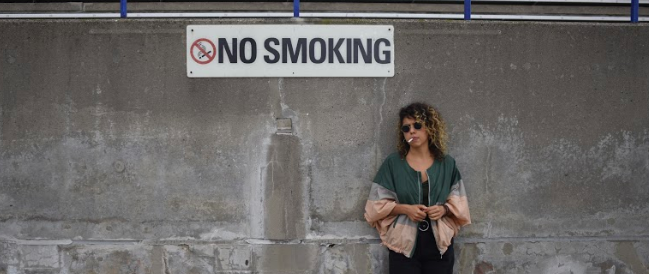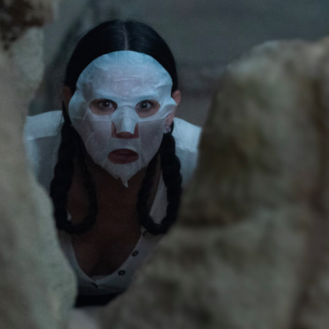Writer/director Geordie Sabbagh, as a storyteller, has a real grasp on the importance of conversations and, as a filmmaker, he’s figured out how to convey these discussions with flavour.
In his new film Canadian Strain, Sabbagh challenges himself with more variables (a story told over a longer timeframe, a controversial topic, more characters to juggle). As a fan of his previous feature A Sunday Kind of Love and a champion for his latest, I was eager to figure out Sabbagh’s approach to this different type of flick.
Addison Wylie: Canadian Strain is very passionate about discussing the legalization of marijuana. As the writer/director, have you always had strong feelings for the topic or does the interest stem from different emotional opinions you’ve collected?
Geordie Sabbagh: I came to the cannabis world as an outsider. I’m neither a user nor had any strong feelings for the topic. The idea for the film started with a simple question that popped into my head when they announced legalization — what happens to all the weed dealers? As I looked into those left behind, I found a diverse community of cannabis advocates and small operators who had fought long and hard for legalization. It was a group that deserved to reap the benefits. Instead, the Ontario government wiped them out allowing itself, a few corporations, including Molson and Labatt’s, and some former cops to benefit. Such a Shakespearean twist.
The story further resonated with me coming from an entrepreneurial family. I often remember my parents, small business owners, being unable to grow past a certain point without the clout of a large company or the support to deal with the ever-increasing burden of government bureaucracy. A glass ceiling that only large sums of money or power can break.
The comedy angle came into it when they formed a government committee around how to deal weed. The jokes just started writing themselves! Having tried to explain the LCBO and The Beer Store to anyone outside of Canada, I knew this would be a story the world would love to understand even if they need a couple of tokes to figure how anyone can lose money dealing weed.
AW: Canadian Strain uses archival footage as bumpers between scenes, and it works really well in order to show a contrast between the past and present. How long did it take to collect all of those clips? Do you and your editor go through a strict vetting process to choose the correct snippets?
GS: The clips came by chance, rather than a strict vetting process. I was searching for a way to land the Winnipeg joke made by Officer Luke. I came across this fantastic tourism video from the 50s. Once I heard the phase, “the Taj Mahal of the Canadian Prairies,” it was going in the movie!
That led me to visiting the Toronto Archives, the Ontario Archives, and the National Archives in Ottawa to see what else they had that might fit within the film. The RCMP film, with the cops playing the dealer, did indeed provide a perfect contrast to where we are now and it tied in nicely to the news clip about the dog, which is something I had found while writing the film and wanted to use.
I was working a corporate job while filming Canadian Strain to help pay for the film. We actually broke filming into two parts so I could go to Chicago as part of the corporate gig. Once I saw that the archival footage was working, I went digging for a corporate video to show Government bureaucracy at work, and how it’s unchanged since time began. Fun fact: Some people assume I’m the guy in that Ontario and You video, but he’s actually a well-known TVO personality and I’m not a big fan of the Herb Tarlek…no I can’t lie, I am.
AW: As Anne, Jess Salgueiro is a good on-screen leader for your movie. When you were first casting that role, what initially made Salgueiro stand out for you?
GS: I’ve worked with Jess twice before. She was in my first film, A Sunday Kind of Love, and in one of my shorts. When I was writing Canadian Strain, we did a table read of the script and she came out to play the role of Anne. She nailed the role and history was made! She’s on the road to superstardom. Letterkenny, Workin’ Moms, and so many Netflix shows – I can’t keep track!
AW: The other actors are also matched well with their roles. Some of these actors have such limited time interacting with Salgueiro, but they each leave a memorable imprint on the film. What’s the key to casting supporting roles?
GS: I think the key to casting any role is to cast actors who will bring 110% regardless if it’s the lead or a supporting role. I’ve worked with many of our cast before and want to keep doing so. All of the actors in Canadian Strain were at the top of their game, and left a memorable imprint because they were able to not only bring out what I’d envisioned for that character, but add a couple of layers to it and add a thousand more jokes (Judy anyone!). Even with only nine shooting days, they were all amazing to work with and I was smart enough to get out of the way and give them space to play.
AW: Canadian Strain is a conversational movie that takes place during a very specific tipping point over the course of a condensed timeline. Last time I interviewed you for your previous feature, A Sunday Kind of Love, you mentioned you drew inspiration from romantic movies. For Canadian Strain, were you inspired by hangout movies? This may seem too on-the-nose, but I sensed a lot of nods to Richard Linklater’s Dazed and Confused.
GS: I do love that film. I also looked to films like Francis Ha, but my main inspiration was drawing from a lot of people I worked with during my summer job growing up. I cleaned washrooms, picked up garbage, and was jump crew for a horse jumping park. I worked with a bunch of blue-collar guys and ex-cons, many who could have been in Dazed and Confused. It was a 7-day a week, 12-15 hour days, brutal job with an interesting contrast between the super rich and the working class.
Anne is based on a good friend I worked with there. At the time I wanted to be a doctor and often talked about how I would be saving a lot of people and then enjoying the great house and car that came along with being “House, M.D.”. My friend’s dream was a large screen TV – that’s it, that’s all. At the time, it was those huge heavy TVs, but that’s all he wanted in life. He was a blue-collar guy who was perfectly happy with one very achievable thing. Yet from his teachers, his family, and even me, there was constant pressure to be more. I kept trying to find a reason as to why he was so unambitious, and it took me many years to understand how in sync he was with himself. There was nothing wrong with what he wanted to be. His outlook was one that seemed well-suited to this world.
On the surface, Anne is perfectly content but, unlike my friend, as we dig deeper we begin to understand that she is holding on to a life of freedom that she believes her failed artist father never had. A perception that she has self-created and turned into a truth. Unlike in Francis Ha, Anne is very good at her job, but her job disappears. As she loses everything, she’s forced to reassess her assumptions, her current situation, and what she truly wants in order to find a new opportunity.
AW: What’s the main takeaway from Canadian Strain that you hope your audiences will respond to?
GS: As always, I hope that people walk away having enjoyed the film and seen a side of Canada that doesn’t have canoes or Mounties…wait, we do have Mounties…
For Canadians, I hope they see another side to legalization that got overlooked in the rush to legalize, and that much of what was promised (global leadership, profits that flow back to citizens etc) hasn’t come to pass. I hope it also speaks to how we treat entrepreneurs and small business in this country. I think that needs to change in order for Canada to get even better than it already is.
Canadian Strain is now available on VOD and Digital HD
Read Addison Wylie’s review of Canadian Strain here!
**********
Do You Tweet? Follow These Tweeple:
Addison Wylie: @AddisonWylie





Be the first to comment